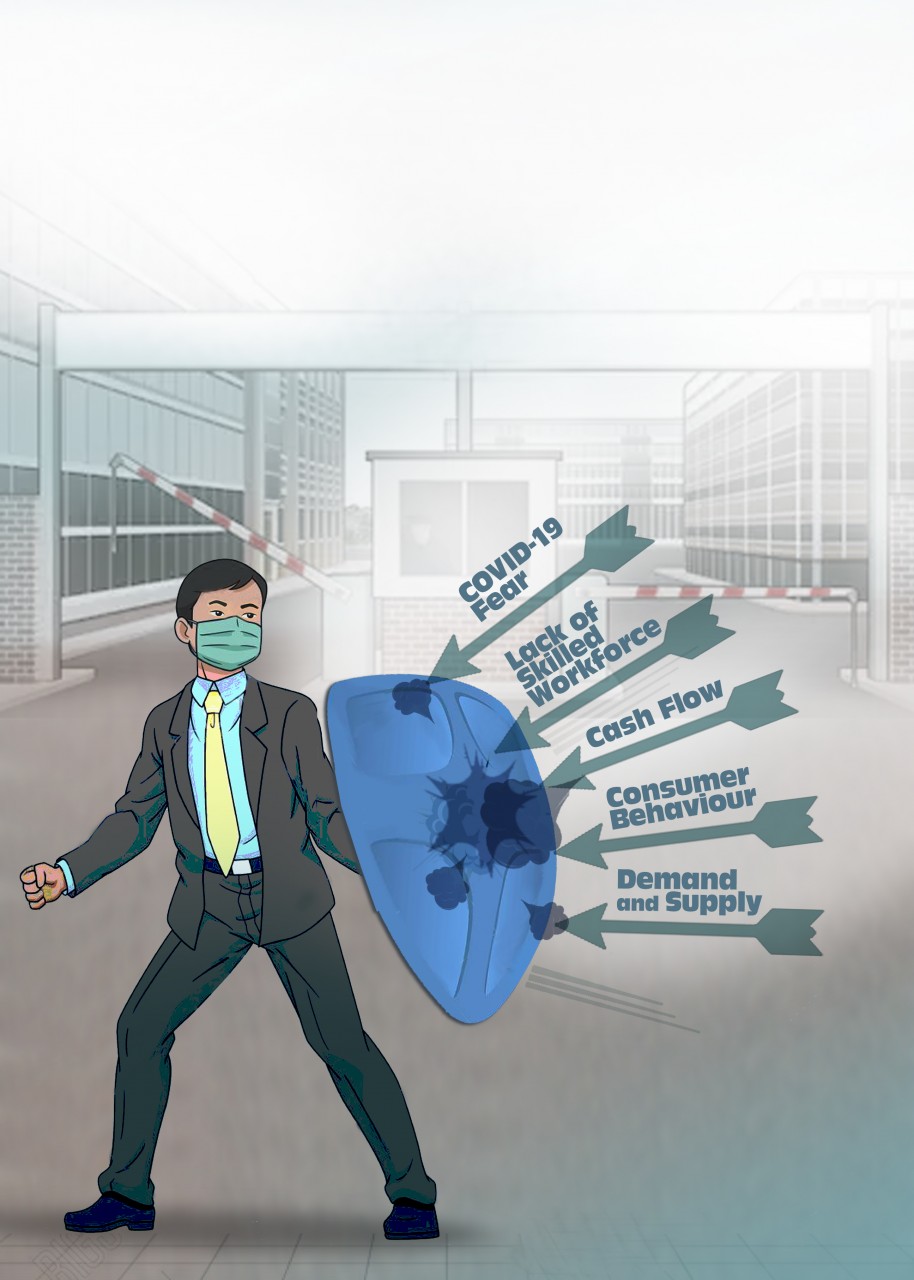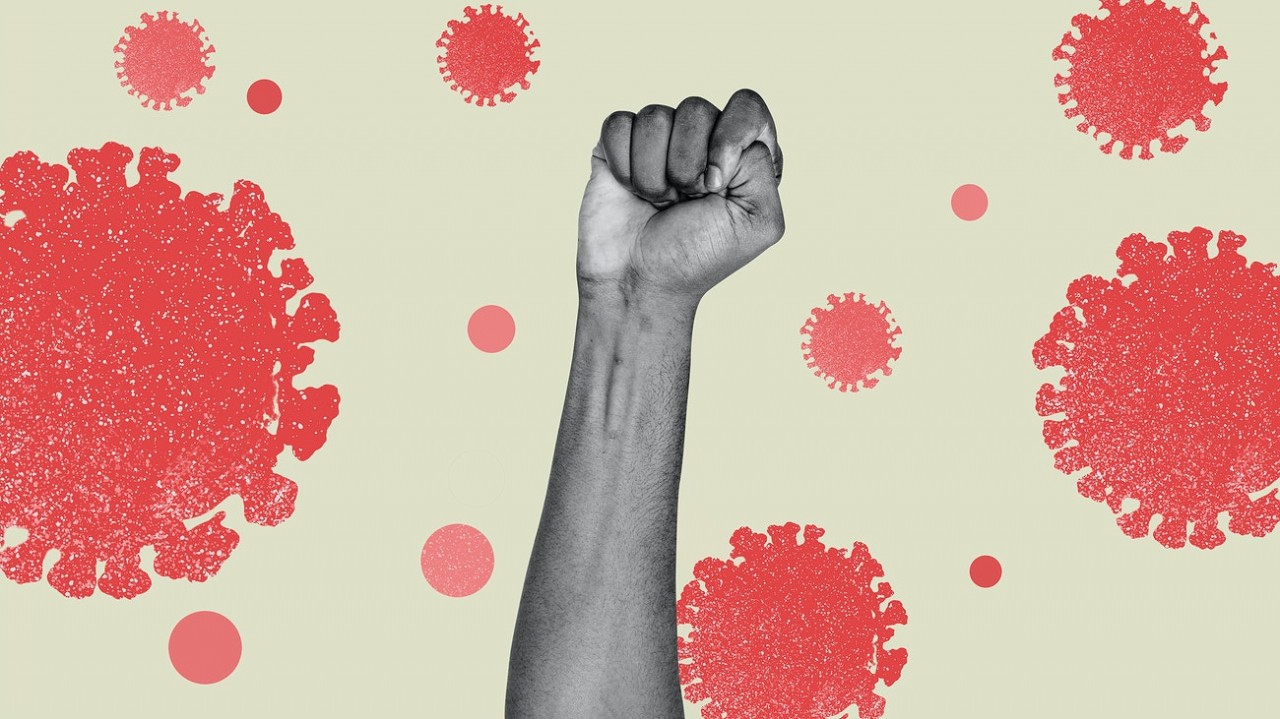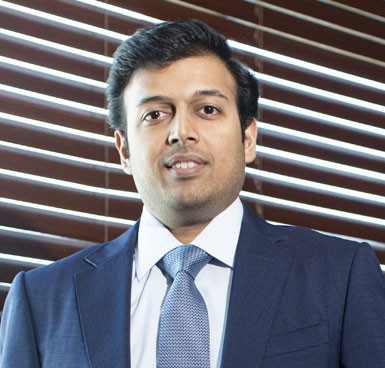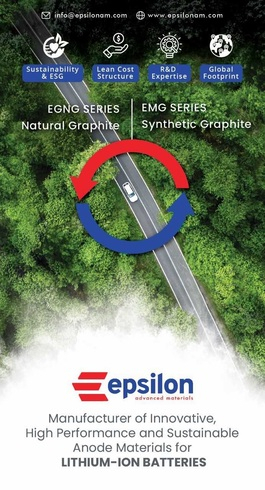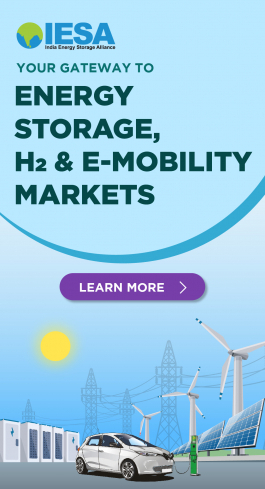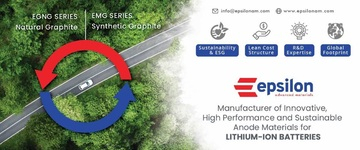Post-lockdown: Old order changeth...
Amid all the confusion that the coronavirus pandemic has created, at least one thing stands clear – that we will have to live with the infliction in the near future. So far, we have been fighting the disease with the only remedy we have at hand: 'lockdown'. But while it has helped create distance with the contagion, it has pulled the whole world into a vortex of change. It is imperative that we come out of it before the economic conditions get harsher.
'Crises and deadlocks when they occur have at least this advantage, that they force us to think' (Jawaharlal Nehru). It is the time to seek a solution for the problems that the pandemic has snarled us in. It is time to rise above the blame game and get down to brass tacks. It is time to rethink, resolve, and evolve.
Now, with lockdown restrictions gradually easing, everyone is staggering to get back on their feet. The business scenario is gathering its bearings as well. Faced with a slew of deterring issues, getting business back on track is going to be tough. The road ahead is bumpy, sure, but with careful and measured footfall one can find a way. Like the finance minister has cautioned 'we have to take baby steps' towards recovery.
The onslaught
One of the first things that happened with the lockdown was the slowdown of the movement of money; less selling, lesser buying. Enduring the lockdown was a survival feat for most businesses. Some could stretch it on reserve funds; some had to make concessions like pay cut, price cut, and reduced production; and some sadly, had to shut shop.
Post-lockdown, the scene would be no better. Uncertainties are always there, with or without the pandemic; what is more of a concern is the certainty. A look at some post-lockdown challenges:
- An obvious cash crunch: A report, published in the Economic Times, featured a survey by the community platform LocalCircles that covered around seven thousand businesses across the country. The survey showed that 47 percent of these had almost exhausted their cash funds. Startups and small-scale businesses probably were hardest hit as they have lesser cash reserves and were least prepared to bear a sudden decline.
- Manpower issues: There are mixed issues here - companies that
worked with migrant labor are left without a workforce as most of them have headed back to their native places; others who have managed to retain their workers, are hard-pressed to pay them. So, even if production were to start post-lockdown, tackling worker issues will be daunting.
A few associations like the CII, FICCI, AIMO and Assocham, recently had a virtual interaction with Labor Minister Santosh Gangwar to improve the workforce situation of MSMEs. Measures suggested to the minister included discharge of liabilities under the labor laws, increase per day working hours, and relax the provisions of the Industrial Disputes Act to treat the lockdown period as lay-off.
- Loans and interest rates: Financial support is what most cash-crunched businesses are expecting from the government to tide over their problems. While the government has released a `3-lakh-crore credit guarantee scheme for MSMEs, the criteria to avail the funds will enable only about 5-6 percent of the MSMEs to benefit from it. There are companies that are now struggling to make existing loan repayments, for them taking on new loans is going to be a disincentive. What the enterprises suggest that could actually help them is deferment of loan payments, and relaxing bad loan norms.
- Supply-chain disruptions: The lockdown has not only affected the manufacturers but also the suppliers in the chain to cease supply. As most transportation sectors were also badly hit, the logistics providers found it difficult to move goods too. For the whole network to restart operations is going to take time.
China, as we all know, is the hub of all global supply chains. It has grown in importance as the main producer of critical components and high-value products. The pandemic has made most countries take a re-look at their dependence on one major source of production and supplies. But decentralizing the juggernaut of global supplies will require a critical evaluation of ones own home-grown capabilities. Well, we are sitting on the tip of an iceberg here; all depends on how hot or how cold it gets.
- Dip in demand: This is an inevitable part of a lockdown; no one's buying. Jobs are at risk, salaries are being cut (or cut-off completely), and the uncertainty of the situation is making people stretch the buck in hand. Spending is a habit we will have to re-cultivate, whereas saving is going to become a necessity.
These are just some of the generic issues that need to be resolved. It is the issues specific to different industry segments that will require real fire-fighting. In the following pages, you can read the views and opinions of industry stakeholders about the post-lockdown challenges and their expectations from the government.
The unknown factor
Amid all the factors that industries will have to face, there are certain that are yet not clear. These unknown/unclear factors are what will remain the same across sectors:
- Consumer behaviour: nobody can say with certainty how the consumers will behave after the lockdown. They are cash-strapped too, will spend cautiously as the threat of the virus still looms large. EV sector is hopeful that the consumer might want to buy personal vehicles to avoid shared transportation, and might opt for an EV for its eco-benefits. On the other hand, fleet operators and cab services are expecting to get back on track with new distancing conditions. But, the fact remains: we don't know what the consumer will do.
- Duration of the infection and the lockdown conditions: we are still iffy on that one. That the virus is going to be around for some time, is something we will have to live with and adopt a cautious lifestyle. Lockdowns delay the rapid spread of the disease, but lockdowns also delay the recovery process. Right now the decision seems to be based on trial and error.
- The time it will take for economic conditions to stabilize: this point depends upon decision taken on the lockdown. Recovering from a three-month breakdown (which might extend if there is a second wave of infection) is going to be a slow process, but hopefully steady.
Since this is an unprecedented event, there are no prior references to handle a situation like this. It would be a guesstimate at best.
Government support
All eyes today are hinged on government support. The COVID-weary governments are at a scramble to put things in perspective... there is so much happening all at the same time. There is urgency in trying to move the gears of the economy, but there is also the constant pressure of the increasing COVID cases. Seeking a balance is easier said.
The government officials representing various sectors have begun meeting industry stakeholders and leaders, in a bid to understand their needs and work out a solution that favours all. Broadly, what most segments are looking at is how the funds of the rescue package will be allocated; if it is through loans, will the interest rates be favourable? Will there be waivers or reduction in import duties? Will there be tax consideration by way of reduction?
No company is looking for a long term benefit package, just long enough to kick-start and get rolling. Everyone wants the economy to get on the recovery path; the government, the businesses, the banks, and the people. The sellers, the buyers and the regulators - all need to get the rupee cycle moving, to get the life cycle going.
RE, EV, and ES
India had made plans to move towards green energy, committing to a target of 175 GW RE capacity by 2022, and further extend it to 450 GW by the end of the decade. The COVID crisis had pulled the brakes on the energy transition and with it, the subsequent technological progress in the area of EVs and energy storage. RE projects, specifically rooftop solar, were facing delays due to problems in acquiring material and organising manpower.
To save the future RE plans from derailing the government has taken strong measures to support the industry: according 'must run' status to RE projects (solar, wind and small hydro), and granting supply chain delays to be treated as 'force majeure'. Furthermore, there is a possibility that a draft bill to amend the Electricity Act, notified during the lockdown period, might make additional provisions for a national RE policy. All this is an indication that maintaining the course of the transition is important to the government.
The EV segment, still in its nascent stages, will probably bear a lesser impact since the market size of EVs in India is still very small. There is no denying that it could prove to be a fast-growing business, with the consumers now aware of the environmental benefits the lockdown has revealed. The setback for this sector will be seen in the procurement of batteries and maintaining infrastructure.
China accounts for almost 3/4th of the battery manufacturing capacity, and dominates the Li-ion supply chain. With the pandemic causing disruptions in battery supply, the effect will be felt on the EV and stationary energy storage market.
The India Energy Storage Alliance (IESA) has stated that it will make a written appeal to the Central government on behalf of the industry representatives, recommending special incentives package for the RE, EV and ES sectors. This includes special GST reduction for a specified period (3 months to 1 year), creation of special ES procurement targets for the next 1-5 year, skill development and capacity building training programs to increase employment.
Change is in order
A sub-microscopic, non-living, parasitic, infectious agent has brought the mighty world to a grinding halt. It has changed the way we live, function and think. Change is the new order waiting to be embraced. A new set of rules, new risks, and new challenges.
Businesses will assume startup roles, some more than the other. There will be new markets to explore, more virtual presence, and newer ways to sell. Business models will have to be reworked: reconfiguring the marketing strategy, keeping expenses in check and only focusing on what is essential to survive.
What change to expect: more plastic money, online marketplace, digital transactions, virtual offices, home-office concepts, virtual events (meetings, conferences, webinars, training, etc.), more machines less human intervention...
How long will this change last? Maybe till it's time to change again.
Lockdowns delay the rapid spread of the disease, but lockdowns also delay the recovery process
The old order changeth, yielding place to new And God fulfils himself in many ways Lest one good custom should corrupt the world.
- Alfred Tennyson
Post-lockdown challenges: Industry views and expectations
Post-Covid, while the overall sentiment may take time to recover (we expect the market to be back to pre-Covid levels only by Diwali), we expect EVs to recover faster than the general automotive market, for reasons ranging from higher environmental awareness to lower cost of operating EVs. All of us have seen the amazing benefits to the environment during this lockdown period, which solidifies the benefits of increasing EV adoption.
In the B2B space, we see demand shifting from shared mobility to rentals and e-commerce delivery space. With the need of social distancing, EV-based mobility startups like Yulu and Bounce have started renting their vehicles on a long-term basis. This not only promotes e-mobility but also provides a window for people to understand the ease of owning electric 2Ws.
We see two major challenges over the next six months:
Challenge 1: Increasing our localization levels by developing a reliable local supplier base.
Exicom has always supported
'Make in India' and has high localization content in its products – whether manufactured in-house or sourced through local suppliers. However, there are still several
key components which we were importing due to lack of local supply base or lack of economies of scale locally. With lockdown across the globe, our supply chain took a serious hit temporarily.
We are working to develop a local vendor network in the shortest lead time. The orders have been prioritized and multiple sources are being used to keep up with the timelines. We have also made sure that all our resources are completely optimized.
Challenge 2: Financial situation of MSMEs
The EV industry is a nascent one, dominated by MSMEs – both on the customer side and the vendor side. The last two months have been tough for MSMEs, despite the government's supportive measures.
We are working with our customers and vendors to evaluate their status and are in constructive dialogue with them on how we can support them tide over this challenging time.
Some specific steps that the government could consider:
- Review FAME II to make it more effective in achieving its objectives
- Continue with the programs to support building a charging network in the country; monitor rate of execution to ensure speedy deployment
- Continue with the procurement program for e-buses for intra-city public transport and increase velocity of procurement
- The startups working on e-mobility should be supported with funding and some programs should be created to provide them with mentorship by the industry leaders to enhance their knowledge base
There are a lot of mixed reviews. We supply battery to mainly 2W and 3W makers, and what we are seeing is 3W clients have opened but on a limited scale. They say they are expecting 20-30 percent orders in the coming months. Diwali is typically is good for the auto industry so we might have a breakthrough, but before that we are not expecting any growth.
By Diwali 80 percent we may see business, but before that only around 20 percent, and that too subject to everything getting normal without hike in cases.
We are an OEM supplier to other manufacturers, and we foresee change in demand from companies.Right now, I can only diversify my product. We have a lot of time for R&D, project and product development, and we are deploying all our energy in that, so that we have something better for the market in next few weeks and months at least.
Cash flow is the biggest challenge; from the biggest industry to a small startup, everyone is facing cash flow problems. The 20 lakh crore [package] is all in the form of loan. There's a limit to how much loan we can take. Again, we have to pay interest on the loan, that is not a subsidy or funds we're getting. We are already paying interest on loans taken earlier. Banks too are cautious now so they will not lend easily. Loan cannot be the answer or solution for the problem.
We do not have a wish list at this point, as we know that the government is busy battling the COVID problem, they cannot take care of the industry right now.
We have to maintain business so now we're cross-training employees; we do not want to lay-off employees. In battery, there is no growth for now, but to maintain our company's balance sheet, position, and maintain turnover we have started a healthcare division. So, we have also started importing health care products and we are manufacturing face masks. It is only for commercial sales.
There could be a possibility that people might want to buy their own vehicles to avoid public transport, but these are middle-level employees who are also facing other challenges like taking care of family needs first, amid job losses and pay cuts. There are job cuts in all major sectors – IT, manufacturing and other. We must accept [COVID-19] as a fact now and learn to live with it.
The country is facing serious economic challenges as a result of COVID-19, and every Industry is affected by it. The pandemic has disrupted the local supply chains and manufacturing and has also impacted demand in the short term. But it's important to keep the medium-long term in perspective and not let the short term issues impact the strategic direction more than they need to.
The impact on EVs will be lower since the market size is smaller. The fundamental need for mobility hasn't gone away. If anything, those for whom public transport, ride-share, etc., was the primary mode of transport, will now be open to personal mobility. That is great for the automobile industry.
There are two key customer segments in the EV market today - one that is looking at EVs purely from a TCO (total cost of ownership) perspective, and the other that sees EVs as the future of automobiles, and as technologically superior. For the former, the tough economic environment makes a stronger case to shift to EVs in the near future. And for the latter, preference is already skewed towards the premium end of the market, and will be relatively less vulnerable to the economic impact.
One of the good things to come off this pandemic is people have now realised the importance of a clean and green environment and have witnessed the quick results that can be seen with reduced air pollution. The transport industry can only reduce air pollution by making a systematic shift to electric mobility, this will drive demand.
The impact will last for the next 2-3 quarters, so we are preparing on all fronts to tackle the market changes ahead. We are choosing to focus on just one product for this year. It will help to create more clarity in everyone, would help cost reduction and quality improvement, production efficiency, and conserve resources on all fronts.
For a lot of OEMs the supply will be severely affected for the next few months, especially those that are dependent on international partners. Ather has a strong local supplier base for nearly 90 percent of the product being indigenously built and sourced but even we expect to see some delays ahead.
Since 2018, the Centre has introduced several EV policies such as FAME II and the phased manufacturing plan for EVs. Several States have introduced policies that have focussed on creating attractive incentives for OEMs to set up manufacturing plants and some of them are also offering additional subsidies for end consumers. As a result, EV sales have increased by 20 percent in the past year with an uptick in the adoption of high performance e-2Ws. We are hoping the government will continue to ensure that the timelines and goals set for mass EV adoption are met in the years ahead.
In order to revive the traditional automobile industry which was already seeing a slowdown, the government will have to initiate fiscal or policy support. The current stimulus package does not address demand generation or support consumer purchase. So the automotive industry as a whole will be affected in the years to come, ICE and EVs alike.
We also recommend creating a pool of capital that startups in this sector can tap into for long-term debt to the tune of $100 million each. It will go a long way in helping accelerate capacity creation in the industry. Increasingly, more and more usage of vehicles is shifting to models like lease/pay-as-you-use, etc., and we recommend supporting these with existing incentive programs.
COVID will have a long term positive impact considering the bilateral ties between India and Japan, Korea, and the USA. Japan has already announced a $2 billion investment package for companies to move out of China. The 'Make in India' program is sure to gain increased momentum with the in-flow of foreign companies, thereby, strengthening the manufacturing capabilities in-house and India well-positioned in becoming the contract manufacturer for the world.
The government can come up with new tax brackets to promote new companies to invest in India in sectors such as automobiles, textiles, high-tech manufacturing, EVs, etc. The EV segment is another opportunity area for India. Having gone through the lockdown phase, people are now more focused on their health, safety, and environmental sustainability. Various government schemes that were announced in the recent past, such as the PMP will stand beneficial to promote localization by way of collaboration between the various EV and EV ecosystem players, thereby reducing the dependence on imports.
As we restart production, there are bound to be some delays as realignment of processes and supply chains will take some time, both at the OEM as well as the suppliers' end. It will be a gradual process due to underlying issues such as availability of manpower, raw materials, transport, etc. Moreover, the manufacturing plants will be running at less than half the capacity, may be, on a single shift basis per day to comply with the govt. guidelines of 33 percent staff in the premises.
At JBM, we are moving very swiftly towards incorporating Artificial Intelligence and Machine Learning across our manufacturing facilities that will not only aid in a smoother resumption of operations post the lockdown, but also sustain a safe and healthy working environment for our employees. We are in regular touch with all our stakeholders to ensure seamless communication.
It is a given fact that the impact of COVID19 is going to have adverse effect on all businesses globally, but with the apt support from the government, resumption of activities can be smoother. In case of the auto sector which contributes more than 50 percent of the national manufacturing GDP, the government needs to introduce special measures to bail the sector out of this phase.
We anticipate the Indian government will come up with supportive measures. Like in 2008-09, the govt. had reduced excise duty in the auto sector, now it could introduce a reduction of GST from 28 percent to 18 percent. The months of April and May are going to fetch no revenues for OEMs, in such a scenario, the workers' salaries could be paid out through various funds like ESIC for a brief period of time so as to de-burden OEMs to some extent. For goods and raw material that have been already imported, eliminating demurrage charges for priority sector projects can be a viable step. Immediate relaxation by extension of the moratorium on interest payment and easing the burrowing norms and statutory payments can help us tide through the crisis. Taking a cue from global measures, subsidizing manpower cost with prime focus on blue collar jobs to aid workers can reduce the impact of the downturn to
some extent.
The core driver of demand is the ongoing transition from fossil-fuel powered vehicles to clean-fuel alternatives. This is in its early stages in India, but is certain to continue. In the employee transportation sector, for example, less than one percent of the vehicles are EVs, so the remaining 99 percent is the market for Lithium's services. Covid may impact the size of the market, but that would still leave lakhs of diesel vehicles that will be replaced by EVs in the coming years.
I believe that our business volume could be back to where it was in March 2020 by the end of this year or early next year. Our existing business may only come back by 60 percent or so by then, but the remainder will come from new clients. Our fleet at the first of these new clients will launch this month itself.
A second factor is that some companies are having a hard think about sustainability, and many are deciding that it's time to take this step more boldly. That will accelerate the adoption of EVs. We're also rolling out an 'Accelerate EV' program that makes it easier for companies that want to try EVs for a few months to do so with limited negotiations and contracting.
The biggest challenge is outside our control. We are worried, like other businesses, that while the country comes out of the lockdown there may be new twists in the pandemic that pushes us back into shutting operations. There's not much we can do about that, however. The rest of the concerns are mostly operational, and no different than they were before the shutdown. In fact, now the main things on my mind are to drive our vision for the mobility-energy ecosystem much faster. How can we work closely with OEMs to bring light electric trucks to market?
How can we roll out the right infrastructure for fleet ops in different cities? These are good problems to be working on.
In India, government support is usually for manufacturers. And if they provide any support, Lithium too may benefit like other buyers. Beyond this, however, I don't think it's right to place any expectations on the government. They have their hands full with Covid, and they are also severely fiscally constrained
by the slowdown in the economy. More importantly, EV fleets don't really require support from the government to be viable; we've already proved that. In the coming months and years, newer vehicles will come to market, and more and more market segments will become viable.
The only new direction I would point to, for governments, is to think about legal definitions of vehicles and service types. These are very sharp, and based on the old economy.
Demand drivers are: pending order execution of government tenders, which were to be completed by March 31.2020. Energy storage demand in non –government sector is driven by economics of cost saving, and we feel in coming quarters there will be expansion in that, if the financing of Capex can be handled. EV fleets for e-commerce delivery will drive demand.
Capacity utilization would be important; there should be focus on new application and demand creation in backup power, and also make it green and emission free. E-commerce must be encouraged to switch to green. Thrust should be on economical phase-out of lead-acid and phase-in of Li-ion batteries. Sectors like telecom and rural green electrification can be create demand as infrastructure spend will get focus from government to revive economy.
Become an alternative to China, beginning with system integrators and simultaneously working on quickly setting up Li-ion cell capacities in India to effectively translate the diminishing worldwide interest in sourcing from China.


